Headaches, fatigue, feeling tired - all these symptoms can be relieved by a neck massage. Many people don’t even realize that this type of massage is very beneficial for the body. With its help, blood circulation in the brain is normalized, normal blood flow is restored, and better absorption of nutrients by the skin occurs.
Systematic neck massage will prolong the youth and beauty of the “early aging” part of the body. As you know, the skin in this area is delicate and sensitive. This is where the first wrinkles appear, which we are not even aware of. The massage procedure will eliminate the first wrinkles, as well as the problem of the double chin.
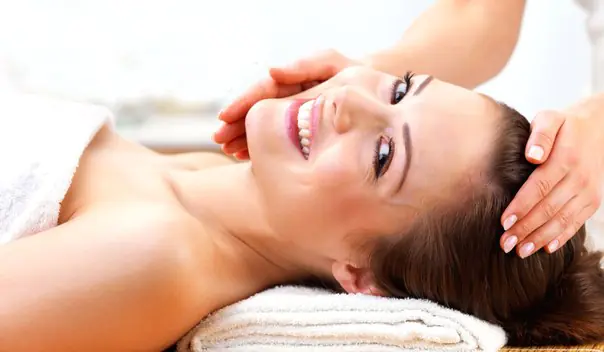
Massage is recommended for headaches, dizziness, and fatigue.
Massage of the back of the neck
Massage in this area is performed along the trapezius muscle and supporting muscles. The patient should assume a sitting position, keeping his head straight. The massage therapist stands behind the patient and begins to massage.
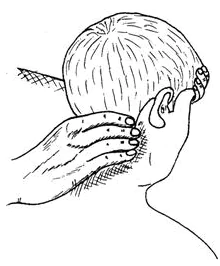
- The procedure begins with straight strokes from top to bottom. Then strokes to the sides.
- Then we move on to kneading. To do this, the massage therapist grabs the trapezius muscle and begins to roll it between his fingers.
- Next is rubbing. Rubbing can be done separately on each side or on both sides at once. To enhance the effect, sawing is performed with both hands.
- Then the massage therapist performs chopping. Chopping the back of the neck is done in the same way as the entire back.
- After receiving the chopping, the massage therapist performs shaking. To do this, the massage therapist stands on the side, clasps the neck with one hand, and holds the patient’s head with the other. In this position, the massage therapist performs trembling movements over the entire surface of the neck, stopping at each cervical vertebra.

After performing a massage on the back of the neck, the patient undergoes smooth head movements: flexion, extension, circling.
Massage of the front and side of the neck
The most important technique in working out this area is stroking. Stroking is performed along the sternocleidomastoid muscle, then along the inner edge where the jugular vein is located. These vessels carry all the blood from the head, neck, and pharyngeal cavity.
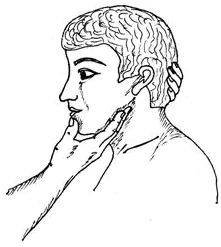
- The patient remains in a sitting position. The massage therapist begins stroking from the lower jaw along the sides to the collarbone. As a rule, stroking is performed simultaneously with both hands. The masseur clasps the neck so that the thumbs are located next to each other and the rest are under the ears. We begin to slide our palms along the neck, moving down to the collarbone. The arms are moved to the sides towards the armpits. Having finished one direction, the massage therapist places his hands under the lower jaw and performs a new stroking in the same direction. You can also stroke with one hand and hold the patient's head with the other.
- Next we start rubbing. Rubbing is performed only on the sternocleidomastoid muscle. Rubbing is done very carefully and gently, as there are many large blood vessels and nerves in this area. You can work with one hand, two, or one thumb.
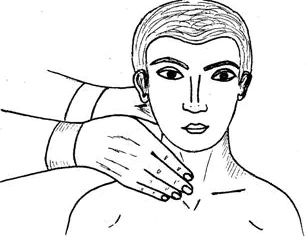
- Massage each side separately: hold the head with one hand, place the second under the lower jaw and perform circular movements, slowly going down, bypassing the larynx area.
- Then the massage therapist stands in front of the patient and performs gentle stroking from the front and sides. If the patient has dense lymph nodes, rubbing is first performed around the glands, then on them themselves.
- Next, the massage therapist begins vibration and shaking. Vibration enhances the secretion of saliva. This is necessary to treat inflammation of the pharynx. To do this, one hand is located under the lower jaw, the second holds the head. With his hand under the jaw, the massage therapist performs quick shaking movements. During this technique, the patient can tilt his head forward, backward, or to the side. This will help the massage therapist reach the necessary glands more deeply.
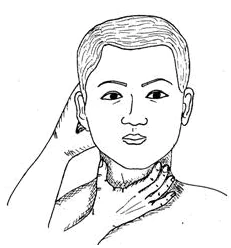
- Then the larynx is shaken. This appointment is prescribed only if any of the specified diseases are present. The masseur grasps the larynx between the index and other fingers. Performing trembling movements, the hand slowly moves downwards.
Massage of the cervical-collar area can be combined with a massage of the face, head, and back. I would like to note that for people suffering from headaches, dizziness, and hypertension, massage in the neck area is simply necessary.



